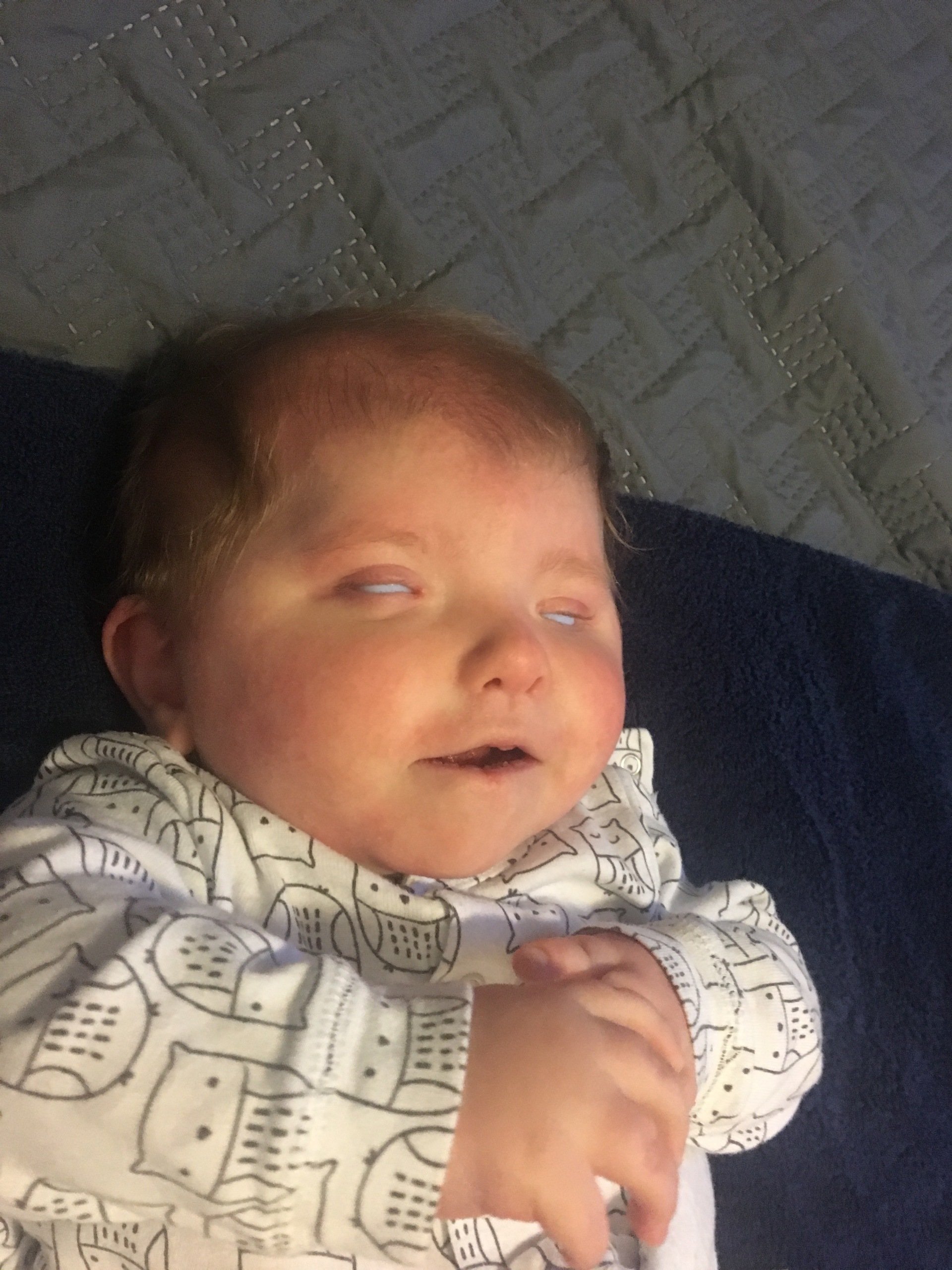Rare Condition: Bilateral Anophthalmia – Information And Resources For Parents Of Affected Infants

Table of Contents
Understanding Bilateral Anophthalmia
What is Bilateral Anophthalmia?
Bilateral anophthalmia is a rare congenital condition characterized by the complete absence of both eyes at birth. Unlike microphthalmia, where the eyes are present but abnormally small, bilateral anophthalmia signifies a total lack of eye development. This absence impacts vision entirely, requiring a unique approach to development and care. Understanding this distinction is crucial for parents in receiving the correct support and information.
Causes and Genetic Factors
The exact causes of bilateral anophthalmia remain largely unknown, making it challenging to predict and prevent. However, research suggests a complex interplay of genetic factors, chromosomal abnormalities, and potentially environmental influences during fetal development. Genetic counseling is highly recommended for families affected by bilateral anophthalmia.
- Potential Genetic Links and Associated Syndromes:
- PAX6 gene mutations
- SOX2 gene mutations
- Several other genes linked to eye development
- Associated with various syndromes, including Rieger syndrome and anophthalmia-microphthalmia syndrome.
- Importance of Genetic Testing and Counseling:
- Genetic testing can help identify specific genetic causes, informing future family planning.
- Genetic counselors provide support and guidance on the implications of the diagnosis and potential recurrence risks.
Diagnosis and Prenatal Screening
Bilateral anophthalmia can sometimes be detected prenatally through ultrasound examinations during pregnancy. However, prenatal detection is not always reliable, as the condition may not be fully evident on ultrasound scans. Postnatal diagnosis is usually confirmed through a thorough physical examination by an ophthalmologist.
- Prenatal Diagnosis:
- Ultrasound scans during the second trimester may reveal absent or underdeveloped eye structures.
- Prenatal diagnosis is not always definitive and may require further investigation after birth.
- Postnatal Diagnostic Steps:
- A comprehensive ophthalmological examination confirms the diagnosis after birth.
- Additional testing may be done to rule out associated conditions.
Supporting Your Child's Development
Sensory Development and Stimulation
Since vision is absent, focusing on developing other senses is crucial. Stimulating touch, hearing, smell, and taste can significantly enhance your child's understanding of the world.
- Practical Examples of Sensory Activities:
- Texture play with various materials.
- Listening to music and engaging in sound-based games.
- Exploring different scents and tastes through safe, age-appropriate activities.
- Tactile books and toys.
- Resources for Sensory Integration Therapy:
- Occupational therapists specializing in sensory integration can provide tailored support.
- Early intervention programs often incorporate sensory development strategies.
Social and Emotional Development
Children with bilateral anophthalmia may face challenges in social interaction and self-esteem. Early intervention and support are essential to foster a positive self-image.
- Importance of Early Intervention and Social Support:
- Early intervention programs help develop social skills and adaptive strategies.
- Support groups connect families with others facing similar challenges.
- Strategies for Building Self-Confidence and Independence:
- Positive reinforcement and encouragement.
- Adaptive strategies to promote participation in activities.
- Fostering independence and self-reliance.
Assistive Devices and Technology
Assistive technology can significantly enhance your child's independence and participation in daily life.
- Types of Assistive Technology:
- Electronic aids for communication and environmental awareness.
- Specialized toys and adaptive equipment.
- Mobility aids.
- Benefits of Early Intervention Programs:
- Early access to assistive devices and therapy can improve developmental outcomes.
- Early intervention helps maximize your child’s potential.
Finding Support and Resources
Connecting with Support Groups
Connecting with other families facing similar challenges provides invaluable emotional support and practical advice.
- Relevant Organizations and Online Support Communities: (Specific organizations should be named here, linking to their websites – this would require additional research)
- Emotional Benefits of Connecting with Other Families: Sharing experiences, reducing feelings of isolation, and gaining practical tips.
Medical Professionals and Specialists
A multidisciplinary team approach is vital for managing bilateral anophthalmia.
- List of Specialists:
- Ophthalmologists
- Genetic counselors
- Developmental pediatricians
- Occupational therapists
- Social workers
- Need for Regular Check-ups and Monitoring: Regular monitoring helps detect and address any potential complications or developmental delays.
Conclusion
Raising a child with bilateral anophthalmia presents unique challenges, but with the right support and resources, your child can thrive. Understanding and managing bilateral anophthalmia effectively requires a comprehensive approach, encompassing early intervention, sensory stimulation, assistive technology, and a strong support system. Living with bilateral anophthalmia requires a proactive engagement in finding the best path forward for your child's well-being. Connect with support networks, advocate for your child's needs, and remember that you are not alone. Seek information, connect with other families, and actively participate in your child's development. Remember, proactive engagement and access to the right resources are key to navigating the challenges of bilateral anophthalmia and ensuring your child's optimal development.

Featured Posts
-
 Toyotas Heavy Losses The Biggest Impact Of Trump Tariffs On Automakers
May 12, 2025
Toyotas Heavy Losses The Biggest Impact Of Trump Tariffs On Automakers
May 12, 2025 -
 The Shane Lowry Video A Look At The Divided American Fanbase
May 12, 2025
The Shane Lowry Video A Look At The Divided American Fanbase
May 12, 2025 -
 Alien Enemies Act Appeals Court Rules Against Trumps Challenge
May 12, 2025
Alien Enemies Act Appeals Court Rules Against Trumps Challenge
May 12, 2025 -
 Anchor Brewing Companys Closure What Happened And Whats Next
May 12, 2025
Anchor Brewing Companys Closure What Happened And Whats Next
May 12, 2025 -
 Indy 500 Takuma Satos Entry Confirms 34 Car Grid
May 12, 2025
Indy 500 Takuma Satos Entry Confirms 34 Car Grid
May 12, 2025
